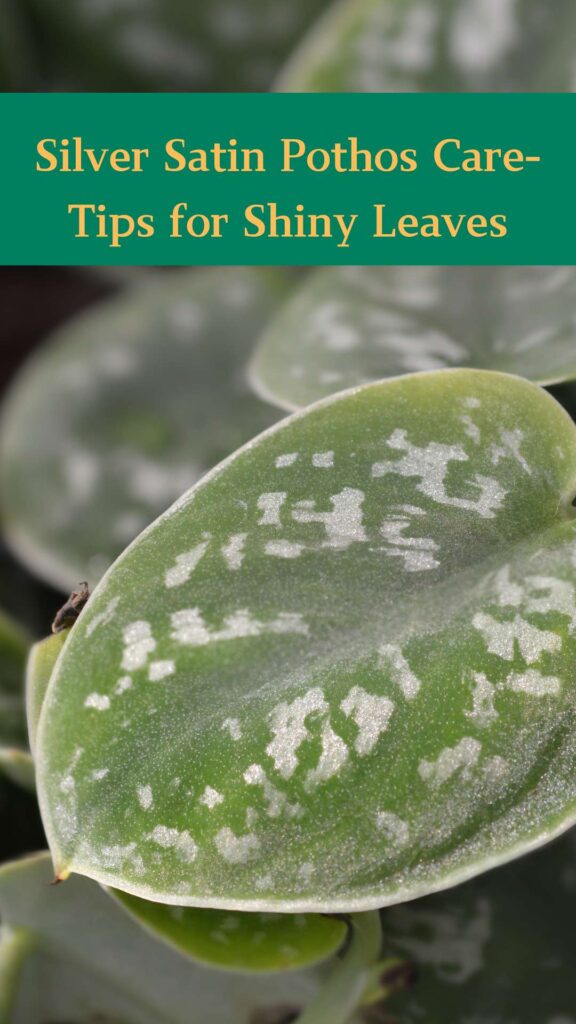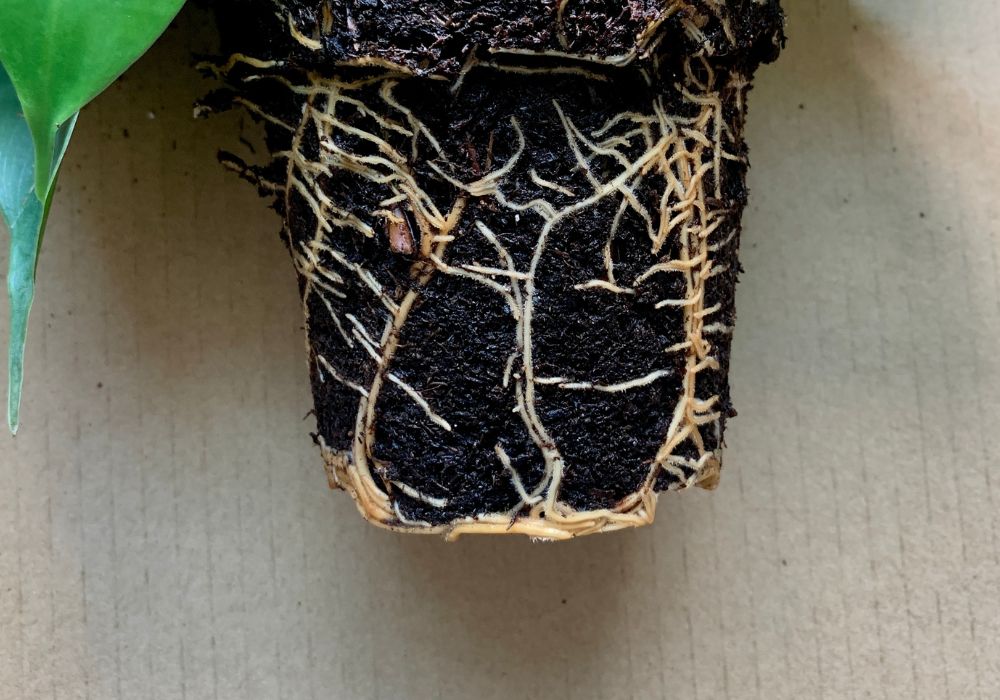
Silver Satin Pothos is a popular choice among plant enthusiasts for its unique silver variegation on its heart-shaped leaves. Not only does it add a touch of elegance to any space, but it also helps purify the air by removing toxins like formaldehyde and benzene. This low-maintenance plant is perfect for beginners or busy individuals who want to enjoy the benefits of having a houseplant without a lot of fuss.
In addition to its air-purifying qualities, Silver Satin Pothos is known for its trailing vines that can create a visually stunning display when allowed to cascade down from a shelf or hanging planter. Its adaptability to various light conditions makes it a versatile choice for different areas of your home or office. With minimal care requirements and the potential to thrive in a wide range of environments, this plant is a wonderful addition to any indoor plant collection.
Ideal Growing Conditions
If you want your Silver Satin Pothos to thrive, providing the ideal growing conditions is key. These plants do best in a warm and humid environment, so try to mimic their natural habitat by keeping them in a room with temperatures between 65°F to 85°F. Avoid exposing them to sudden temperature changes or drafts, as they can be sensitive to extreme conditions.
In terms of humidity, these plants enjoy moisture in the air, so consider using a pebble tray or regular misting to increase humidity levels around them. Additionally, placing a humidifier nearby can also help create the perfect environment for your Silver Satin Pothos to flourish. Remember, keeping a close eye on these basic requirements will set the stage for a happy and healthy plant.
Choosing the Right Pot
When selecting a pot for your Silver Satin Pothos, it’s essential to consider a few key factors to promote the plant’s health and growth. Opt for a container that is just slightly larger than the plant’s root ball, as a pot that is too big can lead to overwatering issues. Choose a pot with drainage holes at the bottom to ensure that excess water can easily escape, preventing root rot.
Additionally, consider the material of the pot. Terra cotta pots are porous and can help to wick away excess moisture, while plastic pots retain moisture longer. Select a pot that complements the aesthetic of your space, whether you prefer a sleek modern look or a more rustic feel. Remember, the right pot not only serves a functional purpose but can also enhance the overall appearance of your Silver Satin Pothos.
Light Requirements
If you want your Silver Satin Pothos to thrive and look its best, providing adequate light is crucial. These plants enjoy bright, indirect light but can also tolerate low-light conditions. Placing your pothos near a window where it can get filtered sunlight throughout the day is ideal. Avoid exposing it to direct sunlight for long periods as this can scorch its delicate leaves.
On the flip side, too little light can result in leggy growth and diminish the vibrancy of the foliage. If you notice your pothos becoming sparse or the leaves losing their variegation, it might be a sign that it needs more light. Remember, finding that sweet spot where your plant receives just the right amount of light will keep it happy and thriving for years to come.
Discover More – Lemon Lime Pothos Care – Achieve Bright, Healthy Plants
Watering Tips
Watering your Silver Satin Pothos properly is key to keeping it happy and thriving. The best way to know when it’s time to water is by checking the soil moisture level – stick your finger in the soil about an inch down, and if it feels dry, then it’s time to hydrate your plant. Overwatering can lead to root rot, so it’s better to err on the side of underwatering than overdoing it.
When it comes to watering, consistency is key. It’s better to water your Silver Satin Pothos when the soil is slightly dry rather than keeping it constantly wet. Make sure to water thoroughly until you see water coming out of the drainage holes at the bottom of the pot to ensure that the roots are getting ample hydration. Remember, each plant has its own watering needs, so pay attention to how your Silver Satin Pothos responds to your watering routine.
Fertilizing Schedule
Fertilizing your Silver Satin Pothos is essential for keeping it healthy and thriving. During the growing season in spring and summer, you can feed your plant with a balanced liquid fertilizer diluted to half strength every two to four weeks. This will provide the extra nutrients needed to support its growth and lush foliage.
As fall and winter approach, you can scale back the fertilizing to once a month or even suspend it altogether. Since the plant’s growth slows down during this period, it won’t require as much fertilization. Remember to always follow the instructions on the fertilizer label and avoid overfeeding, as this can lead to burning the roots of your Silver Satin Pothos.
Pruning Techniques
Discover More – Silver Satin Pothos Care- Tips for Shiny Leaves
To keep your Silver Satin Pothos looking its best, regular pruning is key. When it comes to trimming your plant, focus on removing any yellow or discolored leaves, as well as any growth that appears leggy or sparse. Use sharp, clean scissors or pruning shears to make clean cuts, ensuring minimal stress to the plant.
In addition to removing unhealthy growth, pruning can also help shape your Silver Satin Pothos to your desired look. Trim back any excessively long vines to encourage bushier growth, and don’t be afraid to experiment with different shapes and styles to fit your space. Remember, pruning is not only beneficial for the health of your plant, but it can also enhance its aesthetic appeal.
Pest Prevention
One common pest that can bother your Silver Satin Pothos is spider mites. These tiny insects can be a real nuisance as they suck the sap from the leaves, causing them to turn yellow and look unhealthy. To prevent spider mites, regularly mist your plant with water and wipe down the leaves to keep them clean.
Another pesky visitor your plant might encounter is mealybugs. These white, fluffy insects can quickly take over your Silver Satin Pothos if left unchecked. To fend off mealybugs, inspect your plant regularly and remove any visible bugs with a cotton swab dipped in rubbing alcohol. It’s also a good idea to isolate any infected plants to prevent the spread of these unwanted guests.
Repotting Guidelines
If you notice that your Silver Satin Pothos is outgrowing its current home or the roots are peeking out of the drainage holes, it might be time to consider giving it a new pot. Select a new container that is only slightly larger than its current one to avoid drowning your plant in excess soil. Be sure to choose a pot with drainage holes to prevent overwatering, which can lead to root rot.
When repotting your Silver Satin Pothos, gently loosen the roots from the old soil to encourage growth in the new pot. Add fresh, well-draining potting mix to the bottom of the new container before placing the plant in and filling in the sides with more soil. Water the plant thoroughly after repotting to help it settle into its new home.
Discover More – Philodendron Pothos Care- Ultimate Growing Guide
Training and Support
When it comes to training your Silver Satin Pothos, you’ll want to give it a little guidance to ensure it grows in the direction you desire. Use small stakes or trellises to gently direct the vines where you want them to go. This can help create a fuller and more attractive plant that complements your space.
In terms of support, this plant is pretty low-maintenance. However, if you notice any drooping or weak stems, you can provide some gentle support by tying them to a stake or trellis. This will help keep your Silver Satin Pothos looking neat and tidy while also promoting healthy growth.
Common Problems and Solutions
Despite being a relatively low-maintenance plant, Silver Satin Pothos can still face a few issues that may require your attention. One common problem you might encounter is yellowing leaves, which can be caused by overwatering. To remedy this, simply adjust your watering schedule and allow the soil to dry out more between waterings. On the other hand, if you notice brown spots on the leaves, it could be a sign of underwatering. Try increasing the frequency of your watering, making sure not to let the soil dry out completely.
Another issue that Silver Satin Pothos owners may face is leggy growth, where the plant starts to produce long, vine-like stems with sparse foliage. To combat this, consider pruning back the leggy stems to encourage bushier growth. Additionally, providing the plant with more sunlight can help promote a more compact and lush appearance. Remember, a little bit of care and attention can go a long way in keeping your Silver Satin Pothos happy and thriving in your home.
Propagation Methods
Discover More – Marble Queen Care- How to Maintain Beautiful Foliage
Propagation of Silver Satin Pothos is an easy and rewarding process that allows you to expand your plant collection without spending a dime. One of the most common methods is through stem cuttings. Simply snip a healthy vine right below a node, place it in water, and watch as roots develop in a matter of weeks. Once the roots are established, you can transfer the cutting to a pot with soil, and voilà, you have a new plant ready to thrive!
Another fun way to propagate Silver Satin Pothos is through division. If you have a mature plant with multiple stems, carefully separate them and repot them individually. This not only helps control the size of the plant but also encourages new growth. Just remember to water them well after dividing and give them some time to adjust to their new homes. Before you know it, you’ll have a flourishing collection of Silver Satin Pothos plants gracing your living space.
Final Thoughts
Wrapping up, caring for your Silver Satin Pothos can be a rewarding experience that adds a touch of greenery to your living space. Remember to keep an eye on its growing conditions, potting requirements, and pruning needs to ensure its growth and vitality. With proper care and attention, your Silver Satin Pothos will continue to thrive and beautify your home.
In conclusion, don’t be afraid to experiment with different propagation methods or seek advice if you encounter any pest problems. By following the guidelines outlined in this article, you’ll be well-equipped to nurture your Silver Satin Pothos into a flourishing and vibrant plant that brings joy and natural charm to your indoor environment.
Can Silver Satin Pothos be grown indoors?
Yes, Silver Satin Pothos can thrive indoors as long as they receive adequate light and proper care.
Discover More – Dragon Tail Plant Care- Your Essential Guide
How often should I water my Silver Satin Pothos?
Water your Silver Satin Pothos when the top inch of soil feels dry to the touch. Be sure not to overwater, as this can lead to root rot.
What kind of light does Silver Satin Pothos need?
Silver Satin Pothos prefer bright, indirect light. Avoid placing them in direct sunlight, as this can scorch their leaves.
How do I propagate Silver Satin Pothos?
Discover More – Golden Pothos Care- Easy Tips for Thriving Plants
You can propagate Silver Satin Pothos by taking stem cuttings and placing them in water or soil. Make sure to include at least one leaf node on the cutting.
What are some common problems that Silver Satin Pothos face?
Some common problems include yellowing leaves, root rot, and pest infestations. Make sure to address these issues promptly to keep your plant healthy.
When should I repot my Silver Satin Pothos?
You should repot your Silver Satin Pothos when it becomes root-bound or outgrows its current pot. This is typically done every 1-2 years.
How can I prevent pests from infesting my Silver Satin Pothos?
To prevent pests, make sure to regularly inspect your plant for any signs of infestation. You can also use natural remedies like neem oil to deter pests.
Can I train my Silver Satin Pothos to grow in a certain direction?
Yes, you can train your Silver Satin Pothos to grow in a certain direction by using stakes or trellises. This can help create a more aesthetically pleasing appearance.
What is the best fertilizer schedule for Silver Satin Pothos?
You can fertilize your Silver Satin Pothos once a month during the growing season with a balanced liquid fertilizer. Be sure to dilute the fertilizer to half strength to prevent overfeeding.
How can I ensure that my Silver Satin Pothos stays healthy and vibrant?
To ensure that your Silver Satin Pothos stays healthy, make sure to provide it with the right growing conditions, proper light, water, and nutrients. Regularly inspect your plant for any issues and address them promptly.



